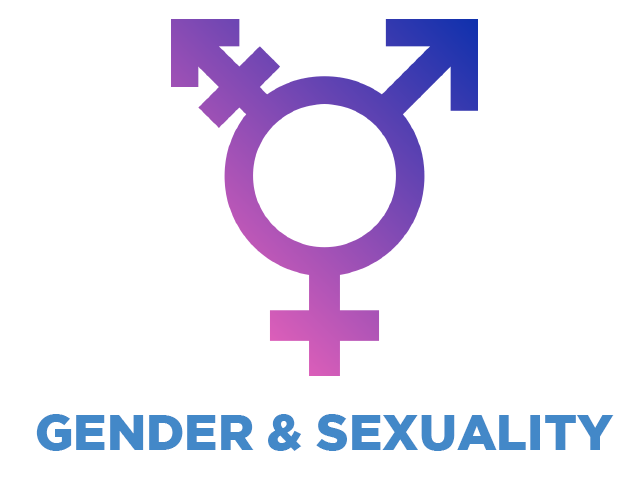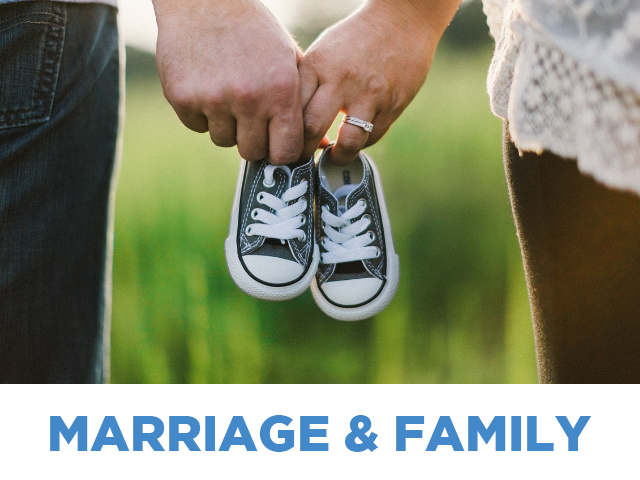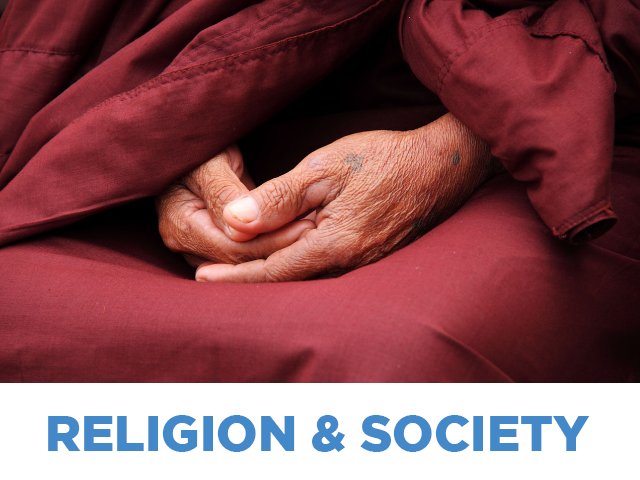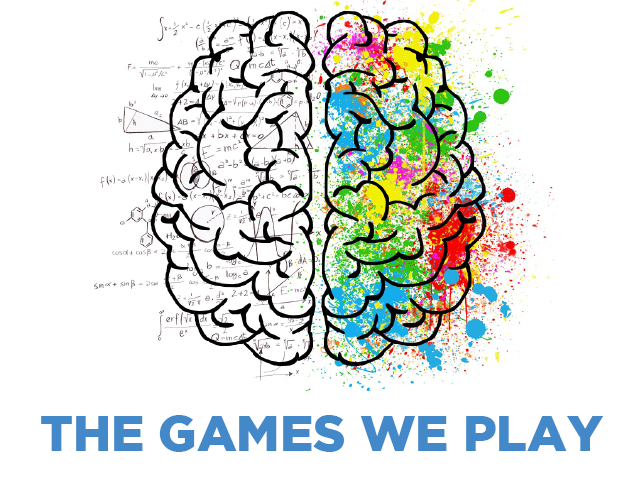![]()
The Queering of America
For most Americans, labels such as “gay,” “non-binary,” and even “members of the LGBTQ+ community” are generally used interchangeably to describe those preferring same sex partners. This imprecision suffices for ordinary conversation, but it fails to capture a key political distinction among today’s homosexuals, namely those embracing the label “queer.”
The label “queer” may appear new, but it is decades old. In his 1995 book Saint Foucault: Towards a Gay Hagiography, David Halperin explains:
As the very word implies, ‘queer’ does not name some natural kind or refer to some determinate object; it acquires its meaning from its oppositional relation to the norm. Queer is … at odds with the normal, the legitimate, the dominant.
…
‘Queer,’ then, demarcates not a positivity but a positionality vis-a-vis the normative— a positionality that is not restricted to lesbians and gay men but is in fact available to anyone who is or who feels marginalized because of her or his sexual practices…
[I]t describes a horizon of possibility whose precise extent and heterogeneous scope cannot in principle be delimited in advance.Queers thus differ from homosexuals who embrace the traditional gay political agenda of same sex marriage and anti-discrimination laws. Queerness aims to undermine the very ideas of normal sexual identity, create a world of “anything goes” where one form of sex is no better or worse than any other. This might include currently illegal sexual practices such as incest, bestiality, and pedophilia. Queerness is thus revolutionary and subversive.
As James Lindsay noted in an August exposé:
And what is it Queer Theory does? It disrupts. By definition. The definition of ‘Queer’ in Queer Theory, as we see, is that which resists and challenges all norms and expectations of normalcy. So bringing into education materials based in Queer Theory, including so-called gender-critical perspectives that separate sex and gender as though they are completely different phenomena, is meant to make children activists in this disruptive, destabilizing mode of misunderstanding the world.
This subversive intent is apparent in how Queers fixate on the education of children, especially very young children, and the campaign to “capture” young children is hardly hidden. At one New York City Gay Pride parade, a flamboyant drag queen openly chanted, “we’re here, we’re queer, we’re coming for your children.” An estimated two million onlookers watched that Pride parade. Proselytizing can be outrageous as in another Gay Pride parade where stark naked tattooed men marched down the street waving to children and their families. Elsewhere a man was dressed as a giant penis, and he too, waved to the crowd. Interestingly, the parade was sponsored by Bud Light beer. A similar parade of naked gay men with children watching recently occurred in Seattle while in Los Angeles elementary school students as young as five were required to participate in a weeklong celebration of “National Coming Out Day.”
The most notable example of exposing youngsters to “Queer” is the fact that drag shows have now become ubiquitous in America’s public schools. One NYC organization—Drag Story Hour NYC—has recently given its raucous drag queen show 49 times in 34 public schools to kids as young as three thanks to $200,000 in city funds. Columbia, Missouri’s Values Diversity breakfast was held to honor Dr. Martin Luther King Jr., and featured a drag show where adults tossed dollar bills at lip-syncing dancers. No parent was informed about sexual content. Permission slips just mentioned “traditionally there are songs, performances, and a food item.”
But the greatest controversy surrounding children and Queer sex concerns banning books from school libraries. The term “book banning” conjures up images of Nazi book burnings but debates ignore whether the portrayed graphic sex is age-appropriate. The often-unspoken reality is that hard core pornography has been placed in school libraries under the subterfuge of “educating” youngsters about human sexuality. No doubt, the graphic depictions are too raw for public forums.
Fortunately, the writer Dave Seminara provides lurid examples that young school children might encounter. In This Book is Gay, transgender author Juno Dawson claims that “perhaps the most important skill you will master as a gay or bi man is the timeless classic, the handjob” and “Something they don’t teach you in school, is that in order to be able to cum at all, you or your partner may need to finish off with a handy.” Also depicted are explicit descriptions of oral and anal sex where the recipient of anal penetration is praised for “taking it like a man.”
Seminara also highlights Jack of Hearts (and Other Parts) by L.C. Rosen, which depicts the explicit “unapologetically queer” active sex life of a teenager that asserts “Big hairy muscled men love taking it up the ass….” On page 285 we encounter a boy who boasts, “What I really get turned on by, is the idea of hurting (girls). Not like beating them or anything but spanking them, slapping them, making them wear collars and ball gags and ordering them around.” Despite the graphic material, the School Library Journal nevertheless praises Jack of Hearts as “an essential addition to library collections that serve teens,” recommending it for children in grades ten and up. These are just a few of Seminara’s examples of Queer pornography found in school libraries.
The Queer movement is also proliferating on today’s college campuses. Five prestigious liberal arts colleges now offer a certificate in Queer, Trans and Sexuality Studies that “leads students to investigate how non-normative and normative genders and sexualities intersect with other social categories such as race, ethnicity, gender, class and nationality.” Another website provides a detailed guide to prospective Queer Studies majors and lists thirty-five colleges offering that major, including prestigious schools such as Brown University, Cornell, Penn State, and Rutgers (a minor in Queer Studies can be found at dozens of top colleges). Another site presents a detailed guide for Queer students on evaluating a school’s program, the challenges a Queer student might face on campus and, critically, available scholarships.
Queer activism is an all-hands-on-deck crusade across the entire American culture. On the movie front, the website Queerty boasted that “2023 is here, it’s queer, and it’s got a ton of great LGBTQ+ movies to look forward to.” The National Gallery of Art has a major exhibition of Queer Art, and thanks to philanthropic generosity, Queer artists will be able to produce yet more paintings, photographs and sculptures. Queer authors can meanwhile avail themselves of some 61 publishing firms which specialize in getting Queer writers into print.
For an identity comprising only a tiny sliver of the population, this is an amazing, almost overnight accomplishment. Its impact, however, may be far from insignificant, and pushing an agenda asserting that there is no such thing as “normal” in human sexuality is not inconsequential. It hardly exaggerates to say that society rests on normal sexuality though, to be sure, not every individual is obligated to embrace procreative sex. Multiple factors are currently reducing already low fertility rates, and we do not need one more push in that direction.
Queerness is a movement whose purpose is psychological affirmation of its adherents, not securing a tangible benefit, and, as such, is without limits. Will requiring grade school kids to watch drag shows help Queers to feel better about their identities? Will hands-on workshops for pre-teens on edgy sexual practices be next? Unlike most traditional gay political demands, for example, legalizing same-sex marriages, the Queer movement will not settle for half a loaf. They want to transform society in their image, not just a new law or two. Then add both physical and psychological damage inflicted on youngsters who decide to experiment with “Queer sex.”
The crusade is not about men harmlessly dancing around pretending to be sexy floozies.
How the Schools Got Queered
Years back, when I lived in Northern California, a huge controversy erupted in a town called Novato about implementing a pro-LGB curriculum and movie called That's a Family in the elementary schools. Parents were outraged, including liberals, and it made national news for months.
California was the epicenter for gay education/indoctrination in the schools, and I was fully enmeshed in these issues, with kids in public and private schools in Marin and San Francisco. The school my kids attended at the time was grappling with the same That's a Family brouhaha. I led the opposition, with tremendous support from mostly liberal parents, including one LGB parent, who said: "At this age, all my child wants to do is play, be with friends, and is not thinking about these issues. It's just not age-appropriate."
How did we get from there to Disney opposing Gov. DeSantis's Parental Rights in Education bill and bragging about outwardly "queering" entertainment for our kids?
In the early 2000s, most parents tolerated some political correctness in the schools, even if they didn't agree 100%, and they generally accepted the diversity and anti-bullying curricula being promoted. The dirty little secret was that these efforts were initially drummed up, pushed, and driven by well-funded LGB activist organizations, like GLSEN, whose long-term goal was to "queer the schools" under the guise of looking out for the kids.
The concept of "diversity" started out fairly generic and innocuous — tolerance for people who are different. But it quickly narrowed to be almost exclusively about gay kids in middle and high school. At the first Diversity Day in our school, there were no black, Asian, or Indian students, or any with disabilities. They were gay, bi, or lesbian.
Tolerance then shifted to full acceptance, which required that children be taught openly about homosexuality, homosexual behavior, and protection against STDs and AIDS. "Accepting" homosexuality meant acknowledging that "male" and "female" are social constructs, gender and sex are not the same, gender falls on a spectrum, and heteronormativity — the idea that heterosexuality is the norm — must be rejected. You got that? Even if we take as accurate polling that shows that 5.6% of Americans identify as LGBTQ+ and 94.4% are heterosexuals, the latter are not the norm.
These newly realized realities were injected into all aspects of education — from classroom to bathroom, from homecoming queens to sports teams. Kids went from the scientific reality of being one of two sexes (even if they were gay) to choosing from a panoply of gender identities that today has climbed to nearly 70 (or more). To accommodate the growing volume of sexual identities, sex ed became more complicated and detailed, instructing children on a range of sexual practices to experiment with as they traversed the gender spectrum looking for a good fit. They were encouraged to pick their pronouns, and some even changed their names or began to present themselves as members of the opposite sex, without parental notification.
Children are impressionable. They can feel confused, vulnerable, highly emotional, and volatile as their bodies change. It's common for most kids to feel alienated and alone at some point. It's not hard to see why activists would target them or why scared kids might be lured into being part of a heavily protected class of individuals that might help them feel more included and special.
Although parents who knew their children best and cared most about them were marginalized, the influence that schools wielded on their children was glaring, even to liberals.
School administrators and progressive activists scoffed at any suggestion that kids could be influenced to become LGBTQ+. It's genetic. Not something they can "catch." We didn't see much of it in the past because of our hateful mores and social strictures against LGBTQ+. More kids identify as LGBTQ+ today because they can!
Once armed with a map and guidelines about gender, the vastness of the spectrum simply came to light.
Our children are no longer comforted by the knowledge that they are fundamentally boys or girls. The reality humankind has taken for granted for eons has descended into a dizzying abyss of choices children feel obliged to make but lack the critical thinking skills and life experience to truly comprehend.
The security blanket of "just being" has been thrown off for the maddening reality of anythingness.
Children need anchors to be emotionally healthy and are adrift without them. Having bought into the promise of redemption once they pick their "true gender," they're often left with a lingering emptiness that parents, not the school or activists, must contend with.
In addition to diversity, gay activists promoted anti-bullying legislation. Bullying, which used to mean pummeling someone behind the gym or extorting him for lunch or homework under threat of physical violence, came to include eye rolls, nasty comments, and insults — even saying something was "gay." Anything that triggered an emotion and required a safe space qualified as bullying.
No one wants children to be mean to one another. No parent wants his child, however the child might "identify," to be bullied or for his child to bully someone else. And, because many schools mishandled bullying incidences, better policies were warranted.
But parents have been played by manipulative LGBTQ+ activists and their fellow travelers in the schools. Although anti-bullying legislation was marketed as protection for all students against any physical or verbal assaults, the long-term goal was to silence alternative viewpoints on LGBTQ+ issues by labeling them "bullying." Similarly, diversity education was marketed as tolerance for all but was actually about "queering the schools."
Empowered by their successes in education, these activists now have tentacles that reach into all aspects of our lives. Our children are groomed not only by the schools, but by the movies they watch, the games they play, and the amusement parks they visit.
Our children are no longer ours, but subjects of radicalized corporations, government schools, Marxist activists, and even useful idiot health professionals. Pediatricians escort parents from the examining room so they can interrogate their children about their gender.
Parents who unwittingly acceded to diversity and anti-bullying education had no idea they were paving the way for today's woke cancel culture; Diversity, Inclusion, and Equity; CRT; and expansive LGBTQ+ programs in our schools, on our screens, and at our workplaces.
Now we are reaping the whirlwind.
After Obergefell forced the term "marriage" to legally apply to same-sex couples, activists who needed to stay funded and maintain their influence in schools and businesses, set their sights on transgenderism. Yet the actual rate of intersex births is only 0.018%, meaning the majority of transgender cases is not only negligible but psychological, not medical. We can all agree that true intersex individuals should be able to undergo any corrective medical procedure as early as is medically sound, and then live their lives as that sex, whether on a passport or a swim team.
Why, then, is such a small number of LGBTQ+ individuals driving the discourse and policy?
At the heart of the LGBTQ+ issue is the larger issue and danger of minority rule. Radical left-wing activists have displaced the majority rule of our republic, which accords rights and a voice to minorities, with actual minority rule. This places the American experiment in jeopardy.
If you think things are ugly now, just wait. It's not someone else's problem; it affects each and every one of us. Why? Because the only way a few can control the many is with an iron fist and a boot on the neck, not with freedom and justice for all.






